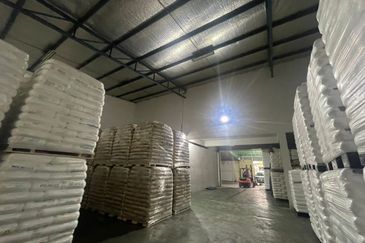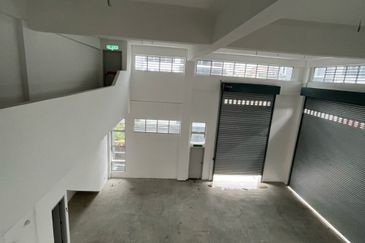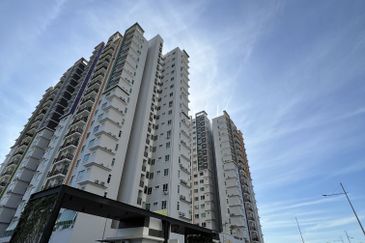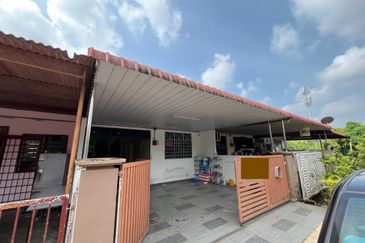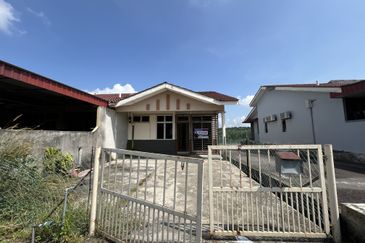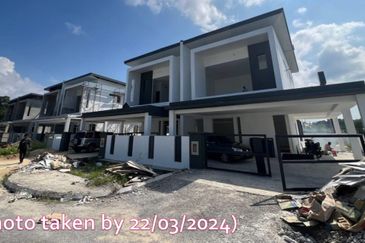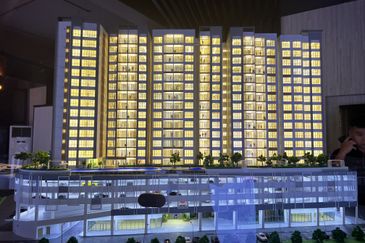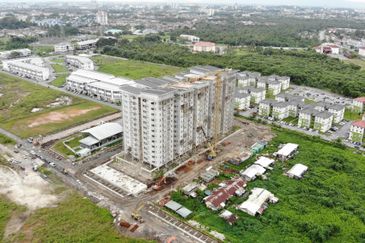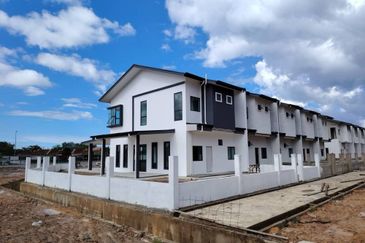THE performance of the commercial office market in Australia in 2012 varied between locations, although nationally, it remained comparatively strong. The underlying and contrasting drivers were ongoing economic growth in China and continuing economic uncertainty in Europe and the US. In broad terms, those sectors and locations that relied on Chinese economic growth outperformed while those sectors and locations more affected by the economic lacklustre typifying much of the Western world underperformed.
In line with the above, the commercial office sector in Brisbane and Perth performed strongly for the first three quarters of the year, driven by tenant demand from the resources sector and businesses associated with this sector. In turn, this led to increased investment interest in these locations - Brisbane in 1H2012 and Perth in 2H2012. A recent fall in commodity prices, among other events, served to dampen tenant demand over the past couple of months, especially in Brisbane. The Perth office sector, with almost 15% rental growth over the year to September 2012, has been the standout performer with rental growth of over 7%.
In contrast, the Sydney and Melbourne office sectors, which rely on financial services and institutions for a large proportion of tenant demand, have been affected by the ongoing global economic uncertainty. Both markets have been flat for the majority of the year. Despite weak tenant demand, internationally high yields in these mature and transparent markets have resulted in sustained interest from overseas investors.
Nationally, the residential sector showed a divide between capital and rental growth. Overall, median prices remained relatively flat for the year. Uncertainty in the global economic condition and job security has driven risk-averse strategies. Furthermore, issues surrounding the affordability of dwellings are still prominent in many purchasers' minds. As a result, the prestige section of the market has struggled with many buyers preferring to participate in the middle range of the market. Over the year to June 2012, the inner Sydney market has been the most resilient, although inner Brisbane has recently shown signs of recovery. In contrast, a large amount of new supply in Melbourne has shown evidence of negatively impacting price growth.
The rental market, however, has performed well over the year. Nationally, vacancy rates have remained tight at less than 3% for the major capital city markets, which enjoyed sustained rental growth over the year. Fewer households choosing to purchase their own home has driven the demand for rental properties. Rents in all inner markets in the major capital cities increased over the same period with the inner Perth unit/apartment market showing a significant rental growth of 15% between June 2011 and June 2012.
In the office sector, the first half of 2013 is likely to follow the trends for 2012 - the same drivers are expected to continue to shape the commercial office market. With limited new supply expected over the year, Perth's central business district is forecast to again be the standout performer. Net face rents are expected to remain flat in the near term for the Sydney and Brisbane CBD markets in the light of weak tenant demand that is partially offset by a weak supply line. In contrast, weak tenant demand and a comparatively larger new supply pipeline in Melbourne and Canberra are likely to drive vacancy rates higher, resulting in a decrease in effective rents.
On the residential front, the four interest rate cuts over the course of 2012 have increased housing affordability in the housing sector. However, this has not translated into greater purchasing activity.
If rents continue to rise over 2013, the argument to purchase a dwelling over renting is likely to become more pervasive. Performances in Sydney, Brisbane and Perth are likely to be stronger due to more limited supply. Brisbane, especially, is likely to perform more strongly in 2013 than in 2012 with many believing the market has bottomed out. In contrast, Melbourne has a strong inner city development supply line, which is likely to dampen competition for new dwellings and therefore any price growth.
Opportunities are likely to exist in all asset classes, although they will be asset specific. The office sector, as the most mature and liquid asset class, is likely to remain most popular among investors. However, as competition for the limited number of high-quality office assets on the market increases, investors are likely to look at other sectors, especially where portfolio transactions are available. There are examples of large portfolio transactions in the industrial, retail and hotel sectors during 2012. Such trends are likely to continue into 2013.
The global economic condition and the strength of the Chinese economy as it transitions to a new government will be influential drivers of the commercial property market in Australia. Resource-based markets (Perth and Brisbane) will look to China and possibly India as their key driver of growth while recovery in Europe and the US will have a larger impact on the performance of Sydney and Melbourne.
The residential market remains dependent upon key economic and demographic drivers. Following the latest cut in December, interest rates are at their lowest level since the global financial crisis - time will reveal the extent to which this latest move will assist in reinvigorating buyer interest in the new year. However, unexpected economic shocks or downturns will adversely affect an already fragile market.
This story first appeared in The Edge weekly edition of Dec 24-31, 2012.
In line with the above, the commercial office sector in Brisbane and Perth performed strongly for the first three quarters of the year, driven by tenant demand from the resources sector and businesses associated with this sector. In turn, this led to increased investment interest in these locations - Brisbane in 1H2012 and Perth in 2H2012. A recent fall in commodity prices, among other events, served to dampen tenant demand over the past couple of months, especially in Brisbane. The Perth office sector, with almost 15% rental growth over the year to September 2012, has been the standout performer with rental growth of over 7%.
In contrast, the Sydney and Melbourne office sectors, which rely on financial services and institutions for a large proportion of tenant demand, have been affected by the ongoing global economic uncertainty. Both markets have been flat for the majority of the year. Despite weak tenant demand, internationally high yields in these mature and transparent markets have resulted in sustained interest from overseas investors.
Nationally, the residential sector showed a divide between capital and rental growth. Overall, median prices remained relatively flat for the year. Uncertainty in the global economic condition and job security has driven risk-averse strategies. Furthermore, issues surrounding the affordability of dwellings are still prominent in many purchasers' minds. As a result, the prestige section of the market has struggled with many buyers preferring to participate in the middle range of the market. Over the year to June 2012, the inner Sydney market has been the most resilient, although inner Brisbane has recently shown signs of recovery. In contrast, a large amount of new supply in Melbourne has shown evidence of negatively impacting price growth.
The rental market, however, has performed well over the year. Nationally, vacancy rates have remained tight at less than 3% for the major capital city markets, which enjoyed sustained rental growth over the year. Fewer households choosing to purchase their own home has driven the demand for rental properties. Rents in all inner markets in the major capital cities increased over the same period with the inner Perth unit/apartment market showing a significant rental growth of 15% between June 2011 and June 2012.
In the office sector, the first half of 2013 is likely to follow the trends for 2012 - the same drivers are expected to continue to shape the commercial office market. With limited new supply expected over the year, Perth's central business district is forecast to again be the standout performer. Net face rents are expected to remain flat in the near term for the Sydney and Brisbane CBD markets in the light of weak tenant demand that is partially offset by a weak supply line. In contrast, weak tenant demand and a comparatively larger new supply pipeline in Melbourne and Canberra are likely to drive vacancy rates higher, resulting in a decrease in effective rents.
On the residential front, the four interest rate cuts over the course of 2012 have increased housing affordability in the housing sector. However, this has not translated into greater purchasing activity.
If rents continue to rise over 2013, the argument to purchase a dwelling over renting is likely to become more pervasive. Performances in Sydney, Brisbane and Perth are likely to be stronger due to more limited supply. Brisbane, especially, is likely to perform more strongly in 2013 than in 2012 with many believing the market has bottomed out. In contrast, Melbourne has a strong inner city development supply line, which is likely to dampen competition for new dwellings and therefore any price growth.
Opportunities are likely to exist in all asset classes, although they will be asset specific. The office sector, as the most mature and liquid asset class, is likely to remain most popular among investors. However, as competition for the limited number of high-quality office assets on the market increases, investors are likely to look at other sectors, especially where portfolio transactions are available. There are examples of large portfolio transactions in the industrial, retail and hotel sectors during 2012. Such trends are likely to continue into 2013.
The global economic condition and the strength of the Chinese economy as it transitions to a new government will be influential drivers of the commercial property market in Australia. Resource-based markets (Perth and Brisbane) will look to China and possibly India as their key driver of growth while recovery in Europe and the US will have a larger impact on the performance of Sydney and Melbourne.
The residential market remains dependent upon key economic and demographic drivers. Following the latest cut in December, interest rates are at their lowest level since the global financial crisis - time will reveal the extent to which this latest move will assist in reinvigorating buyer interest in the new year. However, unexpected economic shocks or downturns will adversely affect an already fragile market.
This story first appeared in The Edge weekly edition of Dec 24-31, 2012.
SHARE
TOP PICKS BY EDGEPROP
SALE
FEATURED

TIARA SENDAYAN (PRESINT 1)
Seremban, Negeri Sembilan
RM 430,000
4 beds |
3 bath |
1300 sqft
SALE
FEATURED

Pangsapuri Titi Mukim (Pangsapuri Pinggiran Perdana)
Penaga, Penang
RM 190,000
3 beds |
2 bath |
691 sqft
SALE
FEATURED

Muara Tabuan Light Industrial Park
Kuching, Sarawak
RM 1,328,000
- beds |
- bath |
2720 sqft
SALE
FEATURED
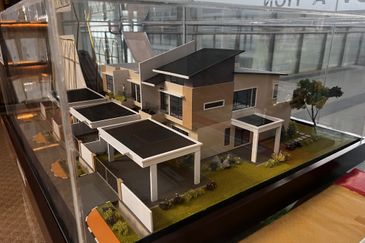
ALAM OASIS @ BANDAR BARU SAMARIANG
Sarawak, Sarawak
RM 650,000
4 beds |
4 bath |
1889 sqft


